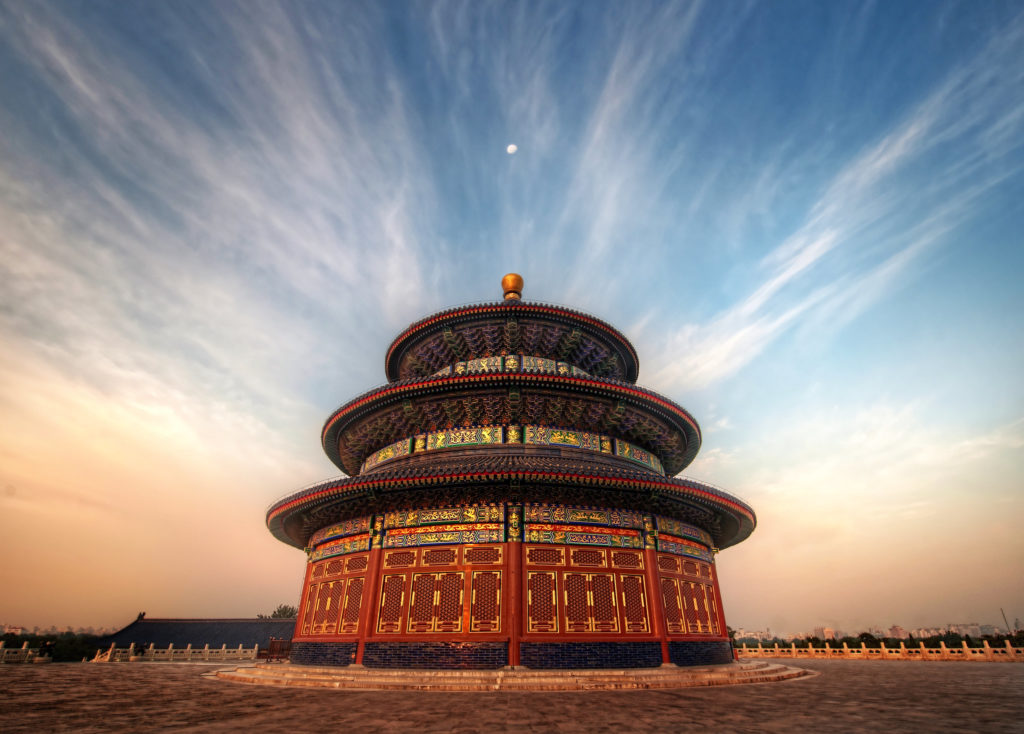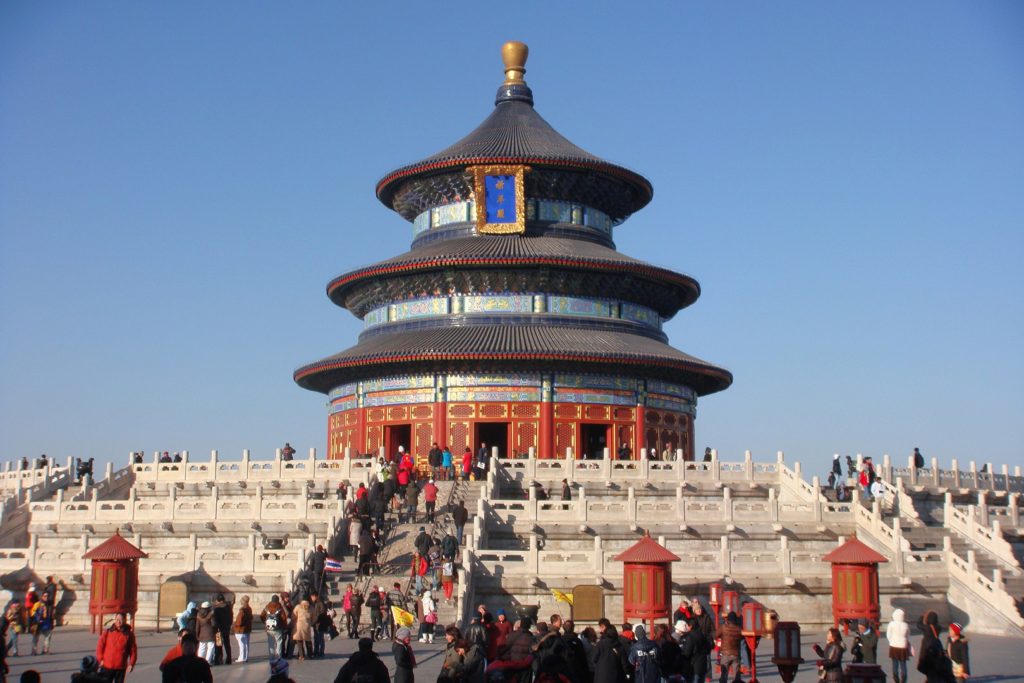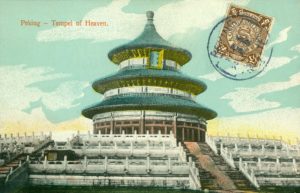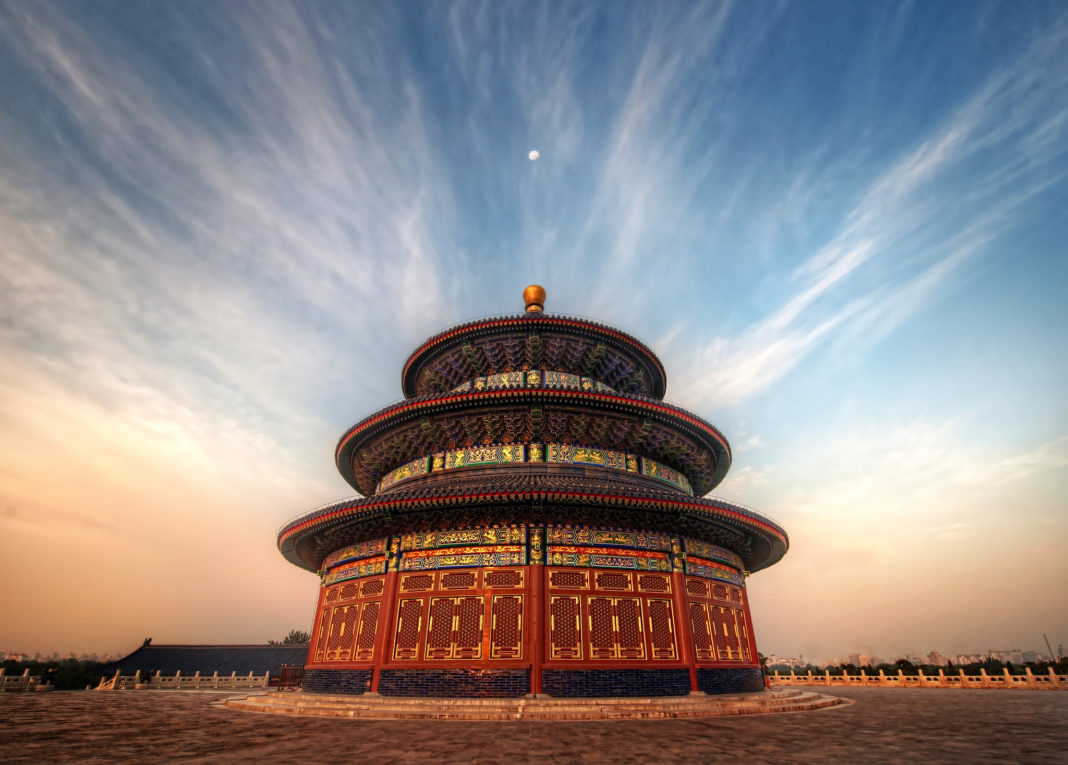The Temple of Heaven is an imperial complex of religious buildings situated in the southeastern part of central Beijing. The complex was visited by the Emperors of the Ming and Qing dynasties for annual ceremonies of prayer to Heaven for a good harvest.

The temple complex was constructed from 1406 to 1420 during the reign of the Yongle Emperor of the Ming Dynasty, who was also responsible for the construction of the Forbidden City in Beijing. It is currently located in Dongcheng Beijing, China. The complex was extended and renamed the Temple of Heaven during the reign of the Jiajing Emperor in the 16th century. JiaJing also built three other prominent temples in Beijing, the Temple of the Sun (日壇) in the east, the Temple of Earth (地壇) in the north, and the Temple of Moon (月壇) in the west. The Temple of Heaven was renovated in the 18th century under the Qianlong Emperor.

The Temple grounds cover 2.73 km2 of parkland and comprise three main groups of constructions, all built according to strict philosophical requirements:
- The Hall of Prayer for Good Harvests is a magnificent triple-gabled circular building, 36 min diameter and 38 m tall, built on three levels of marble stone base, where the Emperor prayed for good harvests.
- The Imperial Vault of Heaven is a single-gabled circular building, built on a single level of marble stone base. It is located south of the Hall of Prayer for Good Harvests and resembles it, but is smaller. It is surrounded by a smooth circular wall, the Echo Wall, that can transmit sounds over large distances.
- The Circular Mound Altar is the altar proper, located south of the Imperial Vault of Heaven. It is an empty circular platform on three levels of marble stones, each decorated by lavishly carved dragons. The numbers of various elements of the Altar, including its balusters and steps, are either the sacred number nine or its nonuples. The center of the altar is a round slate called the Heart of Heaven or the Supreme Yang, where the Emperor prayed for favorable weather.

Earth was represented by a square and Heaven by a circle; several features of the temple complex symbolize the connection of Heaven and Earth, of circle and square. The whole temple complex is surrounded by two cordons of walls; the outer wall has a taller, semi-circular northern end, representing Heaven, and a shorter, rectangular southern end, representing the Earth. Both the Hall of Prayer for Good Harvests and the Circular Mound Altar are round, each standing on a square yard, again representing Heaven and Earth. The number nine represents the Emperor and is evident in the design of the Circular Mound Altar: a single round marmor plate is surrounded by a ring of nine plates, then a ring of 18 plates, and so on for a total of nine surrounding rings, the outermost having 9×9 plates.
The Hall of Prayer for Good Harvests has four inner, twelve middle, and twelve outer pillars, representing the four seasons, twelve months, and twelve traditional Chinese hours respectively. Combined, the twelve middle and twelve outer pillars represent the traditional solar terms. All the buildings within the Temple have special dark blue roof tiles, representing Heaven.

The Seven-Star Stone Group, east of the Hall of Prayer for Good Harvest, represents the seven peaks of Taishan Mountain, a place of Heaven worship in classical China.
There are four main supportive, dragon pillars each representing a season. The structure, held up by these dragons, imitates the style of an ancient Chinese royal palace. Twelve inner pillars symbolize the lunar months, and it is thought that the twelve outer pillars refer to the 12 two-hour periods of the day.
According to Wikipedia















